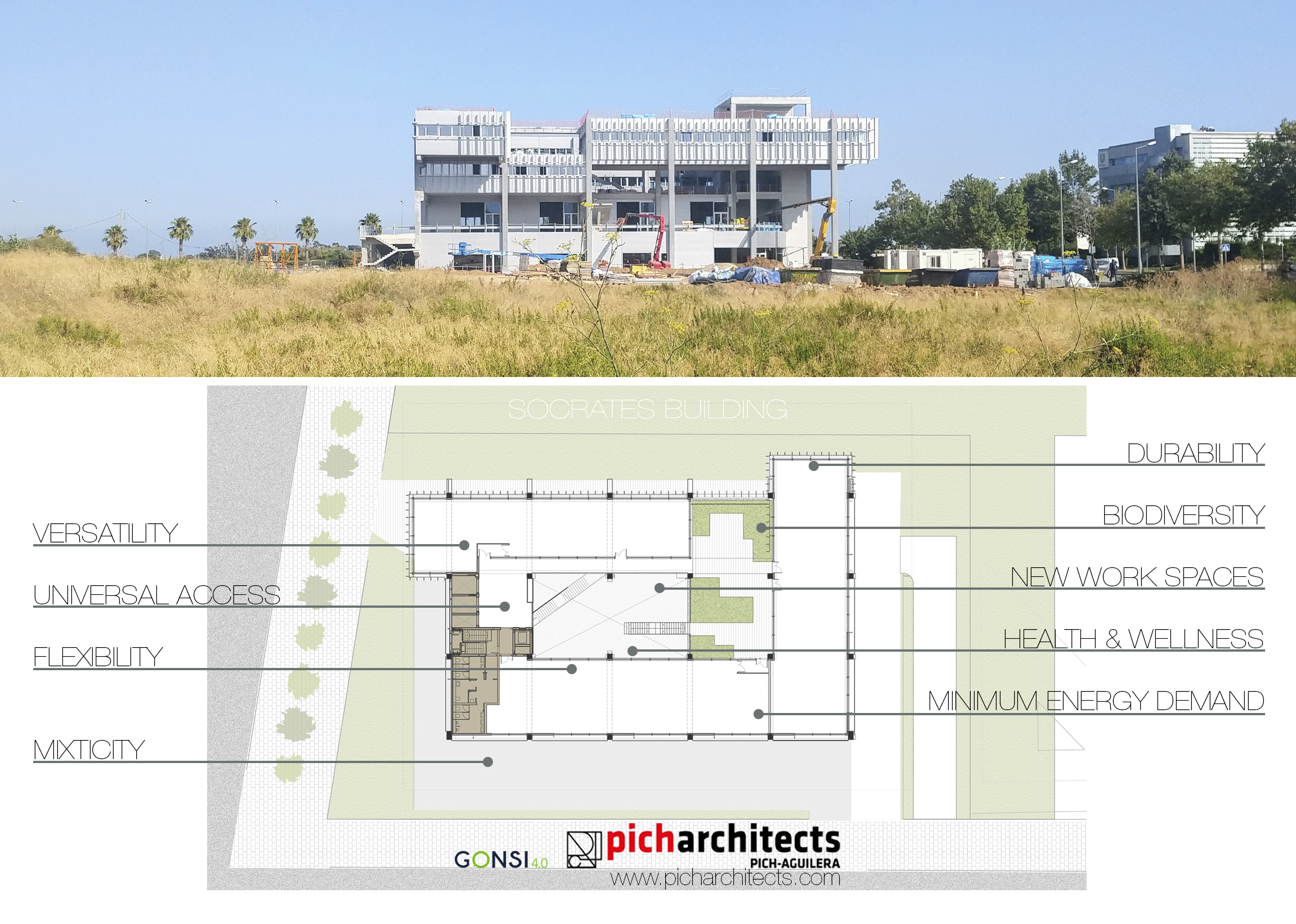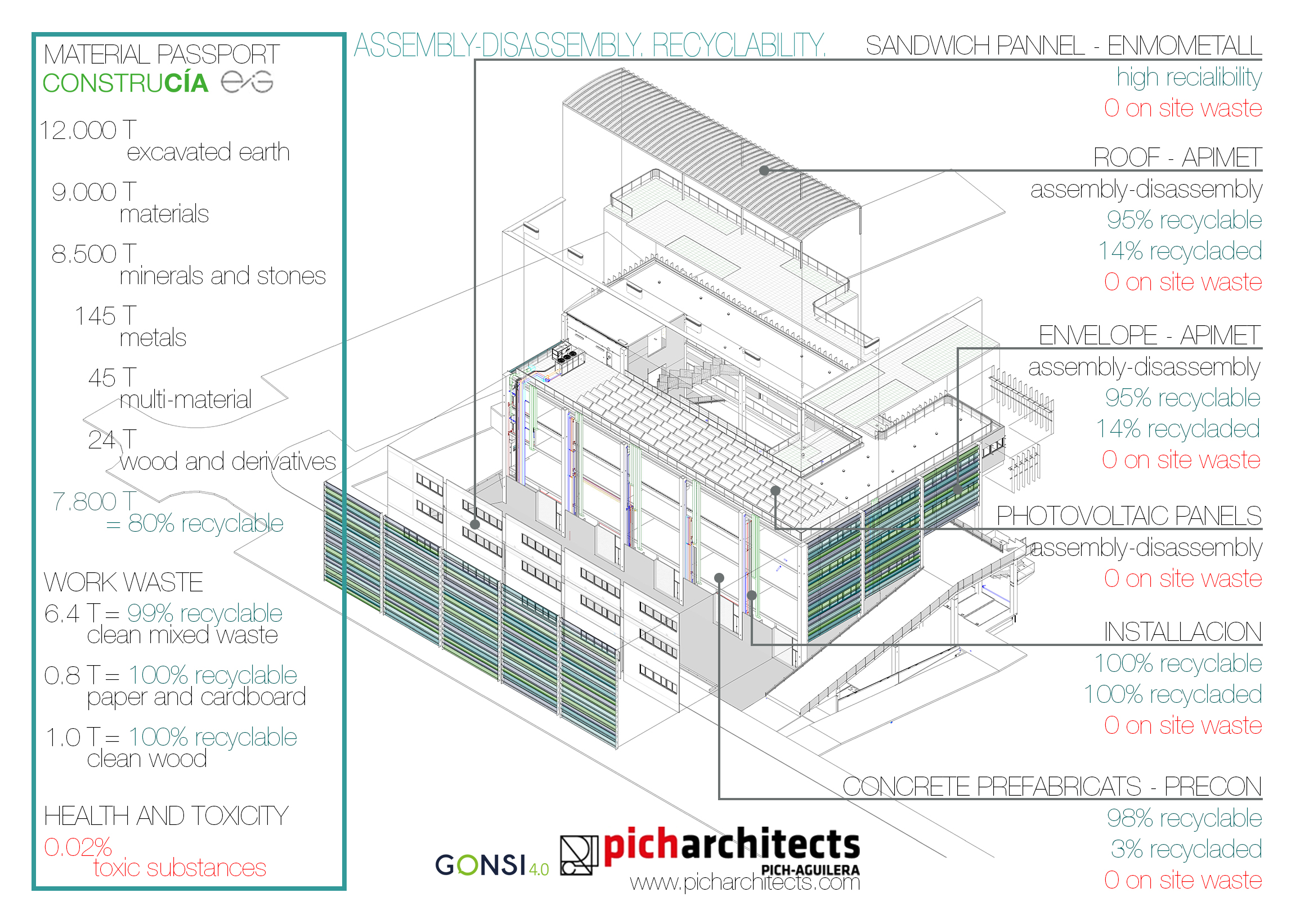Integrating Circular Economy into the architectural project and its construction
We have reached a Global agreement, the United Nations have set 17 Sustainable Development Objectives (SDO), and now is time to implement this transformation in our day to day lives (professional and citizen).
If we focus on the professional field and in our building frame, I would highlight 4 SDO, without avoiding that all of them have influence in our jobs.
- The 17th Objective, that talks about the need of drawing collaboration alliances to face, in mutual agreement, the necessary transformation.
- The 9th Objective, that quotes the industry, the innovation and the infrastructures.
- The 12th Objective, that talks about production and responsible consumption.
- And the 3rd Objective, that defends the health & wellness for everyone.
Promoting, building & living with sustainability, forces us to project from a new perspective. The procedures and tools that we are currently using make it easy. Now we need to organize ourselves in engaged teams with complicity to a result, its usage and the whole of its life cycle. The distortion involved in fragmenting our work in tight phases does not allow an overall vision, or a good compliance with the demands of productivity, efficiency, quality and environmental impact.
If we focus on the environmental sustainability it seems clear that it will tend towards Circular Economy. It is difficult to continue our work from the actual productions & usage systems -extract, produce, transport, consume, use & throw away-.
The Sócrates building tries to respond to the challenge, from a global project approach, to the prescriptive detail of the materials.
The project arises with the possibility of multiple uses, versatility and flexibility, to be able to accommodate the 4.0 industry, with its needs of storage, production and offices spaces. Its accesses and logistics allow loading and unloading, typical of the industry, as well as the pedestrian route for people working in the services sector. Its configuration allows being rented as a whole, or on smaller surfaces. Linked to the versatility and wellness of the users in the building, exterior spaces are raised at different heights, patios with vegetation where you will be able to work or interact outdoors. The relevance of the vegetation and other spaces, beyond the minimum established, begins to be a scientifically proven parameter of comfort, effectivity and health.
The structure is designed with big lights to provide the biggest flexibility in interior distribution. The facade with running windows allows versatility in the interior distribution, an exterior filter, diverse according to orientation, formalizes the envelope. The location of the wiring, in the ring between the filter and the interior enclosure, allows countless connections, as well as facilitates its maintenance. Beyond the systems, the building is built with the objective of reducing energy demand and producing it with renewable energy.
If we focus on the Circular Economy of its construction, we could consider the building as a bank of materials, where any product or system can be reversible. The building is designed by components that are assembled on site and can be disassembled to be replaced, recycled or reused. The collaboration in the design phase with the construction team, manufacturer and assembler, makes possible a detailed knowledge of the materials, their composition, environmental impact, recycling possibilities, even their control over the waste.
The collaboration in the project, with the construction company (Construcía), a consulting firm specialized in Cradle to Cradle (Eco Intelligence Growth) and the industry has allowed to know in detail the weight of the building, as well as the composition of each one of its materials, with the main objective of being able to remove toxic products, avoid the waste on site and know in detail its possibilities, including guarantees, of returning each of the components to their industrial or natural origin.
The need to take care of our resources forces us to work consciously on the environmental impact of our decisions.
Teresa Batlle, architect.

